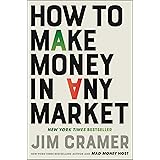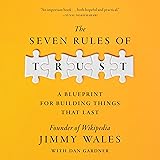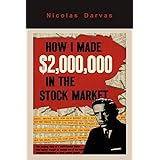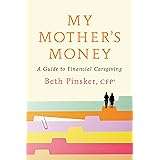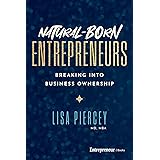Understanding how gold jewelry is priced is crucial for any savvy buyer looking to invest in quality pieces without feeling exploited. As the video above demonstrates, gold prices fluctuate daily, making transparency in pricing a cornerstone of a reputable jeweler. This detailed guide expands on the video’s practical example, offering a deeper dive into the factors that determine the final cost of your cherished gold jewelry.
The core principle revolves around the gold’s weight, its purity, and the market’s live valuation. By grasping these elements, you gain the confidence to make informed purchasing decisions, ensuring you receive true value for your investment in precious metals.
Understanding Gold Pricing: From Market to Masterpiece
The price of gold, like any commodity, is dictated by global supply and demand. This “spot price” is the real-time market value of one troy ounce of pure gold, and it shifts constantly throughout the day, influenced by economic indicators, geopolitical events, and currency strength. When you’re looking to purchase gold jewelry, jewelers base their calculations on this ever-changing spot price, converting it into a ‘per gram’ figure that reflects the specific purity of the gold being sold.
For instance, the video highlights a price of $97.94 per gram for 24-karat gold on a particular day. This exact figure would change hour by hour, reflecting the live market. Jewelers use sophisticated systems to track these fluctuations, ensuring their pricing is always up-to-date.
Demystifying Karat Purity in Gold Jewelry
One of the most significant factors influencing the price per gram is the gold’s purity, measured in karats. Pure gold is 24-karat (24K), meaning it contains 100% gold. However, 24K gold is typically too soft for everyday jewelry, so it’s often alloyed with other metals like copper, silver, or zinc to enhance its durability and alter its color.
- 24 Karat (24K): 100% pure gold. Highly valued but soft, primarily used for investment bullion or specialized jewelry.
- 18 Karat (18K): Contains 75% pure gold (18 parts gold, 6 parts alloy). Offers a rich gold color with increased durability.
- 14 Karat (14K): Contains 58.3% pure gold (14 parts gold, 10 parts alloy). A popular choice for everyday jewelry due to its balance of durability and value.
- 10 Karat (10K): Contains 41.7% pure gold (10 parts gold, 14 parts alloy). The most durable but with the lowest gold content, making it the most affordable.
The higher the karat number, the higher the gold content, and consequently, the higher the price per gram for the material itself. While the video focuses on a stunning 24K Cuban chain, understanding these different purities is essential for comparing prices across various types of gold jewelry.
Deconstructing Your Gold Jewelry Cost: A Detailed Breakdown
The video provides an excellent formula for calculating the cost of a 24K gold chain. Let’s break down each component in more detail, expanding on why these factors are included in your final price for gold jewelry.
1. The Material Cost: Gold Weight by Gram
The foundation of any gold jewelry price is the intrinsic value of the gold itself. This is calculated by multiplying the weight of the item in grams by the current market price per gram for its specific karat. As seen in the video, a 24-karat Cuban chain weighing 87.07 grams, priced at $97.94 per gram, leads to a raw material cost of approximately $8,528.91 (87.07g * $97.94/g). This figure directly reflects the current spot price of gold, adjusted for purity.
It’s important to note that jewelers usually factor in a small margin on the raw material cost to cover assaying, handling, and hedging against price fluctuations. This ensures business viability while still offering a competitive price to consumers.
2. Labor and Craftsmanship: The Artisan’s Touch
Beyond the raw material, the skill and effort required to transform raw gold into a beautiful piece of jewelry command a significant portion of the price. The video cites a labor cost of $1046 for the intricate Cuban chain. This cost encompasses numerous stages:
- Design and Prototyping: The initial concept and creation of molds.
- Manufacturing: Casting, soldering, shaping, and assembling the piece. For complex designs like a Cuban link, this can be incredibly time-intensive.
- Finishing: Polishing, engraving, setting any gemstones (though none mentioned in this video’s example), and quality control.
- Overhead: Costs associated with the workshop, tools, and skilled artisans’ wages.
The complexity of the design, the reputation of the craftsman or brand, and the intricacy of the manufacturing process all directly influence this labor cost. A simple, machine-made chain will have a lower labor cost than a hand-finished, unique designer piece.
3. Sales Tax: A Local Reality
A crucial, though often overlooked, component is sales tax. The video highlights New York’s specific tax rate of 8.875%, which significantly impacts the final price. This percentage is applied to the combined material and labor cost. Sales tax rates vary widely by state and even by municipality, so always factor in your local tax when estimating the total cost of your gold jewelry purchase.
Some states may exempt certain precious metals or investment bullion from sales tax, but finished jewelry typically incurs it. Always confirm the applicable sales tax for your location to avoid any surprises.
4. Credit Card Transaction Fees: The Cost of Convenience
Many businesses, especially those dealing with high-value transactions, pass on credit card processing fees to the customer. The video mentions a multiplier of 1.03, indicating a 3% transaction fee. This covers the charges levied by credit card companies and banks for processing payments. While often an invisible cost in everyday purchases, for an item like a $10,000 gold chain, a 3% fee amounts to an additional $300.
It’s worth noting that some jewelers absorb this fee, while others, particularly for large purchases, may offer a discount for cash or debit card payments to avoid these charges. Always inquire about payment options and any associated fees.
Putting It All Together: The Calculation Example
Let’s recap the video’s example with our expanded understanding of each component:
- Material Cost: 87.07 grams x $97.94/gram (24K gold) = $8,528.91
- Add Labor Cost: $8,528.91 + $1,046 = $9,574.91
- Apply Sales Tax (8.875%): $9,574.91 x 1.08875 = $10,424.32
- Apply Credit Card Fee (3%): $10,424.32 x 1.03 = $10,737.05
This final calculated price of approximately $10,700 for the 24K Cuban chain matches the video’s conclusion, illustrating the systematic approach jewelers use to determine their gold jewelry pricing. Each step is a transparent component, not an arbitrary markup.
Beyond the Numbers: Other Factors Influencing Gold Jewelry Value
While the calculation provides a fundamental price, other intangible factors can influence the perceived value and market price of gold jewelry:
- Brand Reputation and Exclusivity: Renowned jewelers or designer brands often command higher prices due to their heritage, unique designs, and perceived quality.
- Design Complexity and Innovation: Pieces with intricate designs, unique settings, or innovative craftsmanship may carry a higher premium.
- Rarity and Collectibility: Antique or limited-edition pieces can appreciate in value, moving beyond just their gold weight.
- Ethical Sourcing and Certifications: Gold sourced through conflict-free and environmentally responsible channels often has a higher price point, reflecting the ethical practices involved.
Empowering Your Gold Jewelry Purchase
Understanding the detailed breakdown of gold jewelry pricing empowers you to become a more confident and discerning buyer. Don’t hesitate to ask your jeweler for a transparent breakdown of costs, similar to the method shown in the video. Inquire about the current gold price per gram for the specific karat, the labor charges, and any additional fees.
By comparing prices across different jewelers, understanding karat purities, and staying informed about the daily spot price of gold, you can ensure that your next gold jewelry purchase is a valuable and cherished investment.


